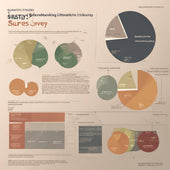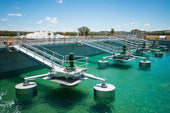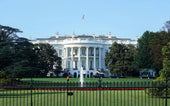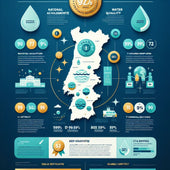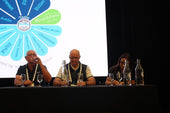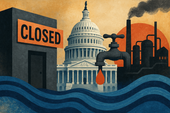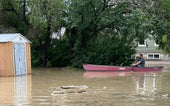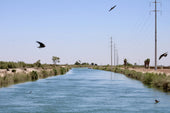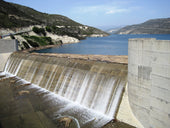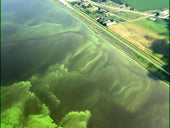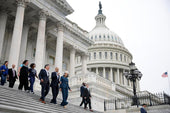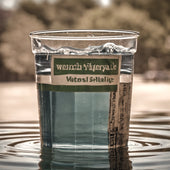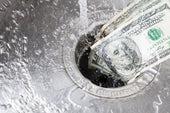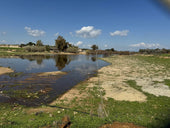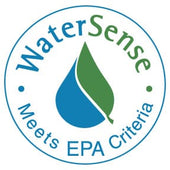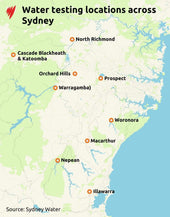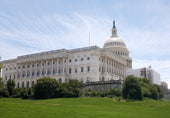
Utah’s Fluoride Ban in Drinking Water Won’t Settle Dispute on Safety

On March 27, amid a flourish of national attention, Utah’s Republican Governor Spencer Cox signed much-debated legislation that bans adding fluoride to the state’s public drinking water systems. The ban, which takes effect on May 7, is the first by a state to outlaw community water fluoridation since the U.S. Public Health Service formally endorsed the practice in 1950.
Utah’s action, coming after months of political and scientific debate, puts the state at the center of a far-reaching and increasingly aggressive confrontation between grassroots activists and government about the role public agencies should take in deciding what many citizens view as private health decisions. Utah’s ban on fluoride in drinking water is a feature of the mounting influence of campaigns that reject government health directives such as wearing masks during the COVID-19 pandemic or mandatory vaccination requirements for schoolchildren.
The Trump administration has clearly come down on the side of the activists. Robert F. Kennedy Jr., the secretary of the Department of Health and Human Services, was an outspoken leader of the citizen movement before he joined the government, and described fluoride as “an industrial waste.”
This month Kennedy called on other states to ban fluoride and directed the Centers for Disease Control and Prevention — which praises fluoridation as one of the 10 greatest public health achievements of the 20th century — to stop recommending the practice. During a tour of the West Kennedy stopped in Salt Lake City to praise Utah for “taking the lead in so many ways.” He added: “I’m very very proud of this state for being the first state to ban it and I hope many more will come.”
The addition of fluoride to drinking water has been a common practice in most major U.S. water systems for decades. In 1945, Grand Rapids became the first city in the world to fluoridate its drinking water as part of a pilot study. The results of the study released 11 years later found that the cavity rate among children born during the experimental period was reduced by 60 percent, which sparked the mass fluoridation of water systems across the country.

In 1960, about 50 million Americans were receiving fluoridated water. By 2002, that number had risen to 171 million, or about 59 percent of all Americans.
Despite the science-backed health benefits, water fluoridation also attracted opposition since its inception. During the Red Scare of the 1950s, some claimed that fluoridation was a Communist plot to poison Americans. Today, opponents shifted their criticism, highlighting recent studies showing that fluoride has negative effects on human health at high concentrations.
The linchpin of Utah and Kennedy’s campaign to ban fluoridation is a meta-analysis published by the National Toxicology Program in last August. It found that high levels of fluoride exposure, such as drinking water with over 1.5 milligrams of fluoride per liter, is associated with lower IQ in children.
The study, though, made no conclusions about the effects of low fluoride concentrations, namely the 0.7 milligrams per liter found in fluoridated water supplies in the U.S. Moreover, the studies examined were primarily based in other countries such as China, Mexico and Pakistan, where fluoride levels in water are naturally high due to other sources.
These caveats call into question the validity of using the report to justify removing fluoride from U.S. water systems, say supporters of the practice. The NTP itself states that “more research is needed to better understand if there are health risks associated with low fluoride exposures.”
During the Utah House committee hearing for the bill in January, several witnesses mentioned the purported negative effects of fluoride on cognitive health. But the more important issue seemed to be medical freedom, or the belief that the government should not medicate its citizens, in this case with fluoride, without their informed consent.
“Those who do not decide they want additional fluoride have no ability to get drinking water without paying for expensive reverse osmosis water filters or buying bottled water,” said Aimee Winder Newton, a Salt Lake County council member, during the hearing.
Newton argued that with the wide availability of affordable fluoride-containing products such as toothpaste and mouthwash, extra fluoride in drinking water may be unnecessary. Most of the studies showing the significant benefits of water fluoridation were published before 1975, when tooth decay was much more prevalent in the U.S. A 2024 review looking at contemporary evidence in support of community water fluoridation found that the practice still serves to reduce the incidence of dental caries, albeit with smaller effect sizes than were shown by older studies.
Newton pointed to data from the Utah Department of Health and Human Services on claims for dental fillings in children in 2023, which ranked counties by the lowest average number of teeth filled per person. Davis and Salt Lake Counties, the only two in the state with fully fluoridated water systems, ranked fifth and ninth, respectively. The data, she said, suggested that fluoride in water may not be necessary for children’s oral health.
Nevertheless, community water fluoridation has not become any less valuable now than it was before, proponents say. The Canadian city of Calgary began fluoridating its water in 1991 and stopped in 2011, after which the rate of tooth decay among second graders increased significantly compared to neighboring Edmonton. A similar result was seen in Juneau, Alaska, where the number of cavity-related procedures in children increased after it ceased its fluoridation program in 2007.
To an expert, these outcomes are not surprising. Dr. Richard Fisher, a dentist in Salt Lake County, believes that the benefits of drinking fluoridated water are more substantial than many realize. Fisher is the president-elect of the Utah Dental Association, which released a statement condemning the bill’s passage.
“It’s going to be heartbreaking for us to see increased dental disease, especially for my young patients who did not have the choice in the matter. Doctors and pharmacists across the state are going to have to step up to make sure children are getting adequate fluoride treatments,” Fisher said in the statement.
In an interview, he explained that fluoridated water is especially critical for young children whose bone structures are still developing. When fluoride is ingested, it is incorporated into growing teeth as they are formed, resulting in teeth that are harder throughout. On the other hand, toothpaste and other topical fluoride treatments are more limited in their effects.
“[Brushing] will make the surface of it stronger by combining on the surface with phosphates and calcium to create fluoride ions that hardens the tooth, but you won’t get the benefit of it being built from the inside out,” Fisher said.
If fluoridated water is unavailable, systemic fluoride can also be replenished by consuming fluoride tablets. Although the tablets are inexpensive at $16 for a four-month supply, it is an astronomical increase compared to the 64 cents it costs to fluoridate water for one person over a year. Furthermore, the need for consultations and prescriptions adds extra work for patients, pharmacists and dentists.
To combat anti-fluoride sentiments in the U.S., Fisher and his colleagues from around the country have been lobbying in Washington for funds to conduct domestic research on the safety and effectiveness of fluoride, given that the controversial NTP report from 2024 was largely based on foreign data.
But for Winder and other supporters of the Utah ban, science is not the only factor that needs to be considered. “You have to look at if this infringes on other people’s rights,” she said. “We’ve got to look at the whole picture, and I think that that’s why this gets to be a tricky policy issue.”
Featured Image:
The Central Valley Water Reclamation Facility, one of the many water treatment plants serving Salt Lake City. Salt Lake and Davis Counties are the only ones in the state that currently fluoridate their water supplies. Photo: Central Valley (Utah) Water Reclamation Facility
The post Utah’s Fluoride Ban in Drinking Water Won’t Settle Dispute on Safety appeared first on Circle of Blue.


